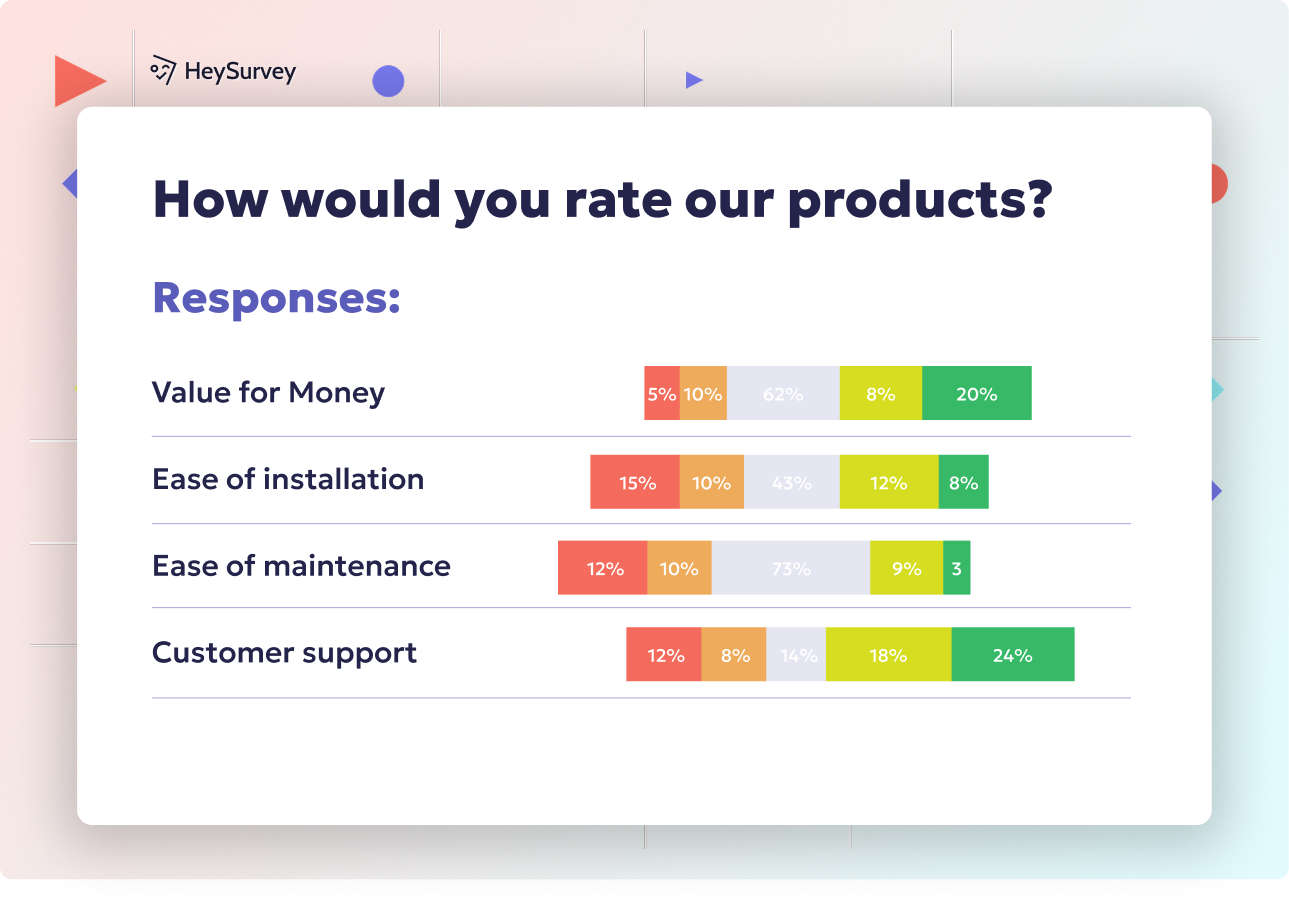31 Community Safety Survey Questions to Improve Security
Discover 20–30 community safety survey questions that spotlight concerns, inform safer environments, and empower local solutions.
The rush of discovering something new can feel like stepping through a hidden portal. It sparks creativity, boosts confidence, and reveals opportunities we never knew existed.
Sometimes, unexpected challenges turn into thrilling chances to uncover fresh talents that enrich our routines. Every attempt to learn, whether it's composing a tune or practicing calligraphy, adds a dash of magic to our daily lives.
The Power of Curiosity

Curiosity propels us to see the world as a puzzle. It nudges us to explore, question, and experiment with childlike wonder, thereby breathing life into all we do. When curiosity guides our steps, even mundane tasks become a canvas for new discoveries.
According to a 2019 report by the American Psychological Association, curious individuals display higher problem-solving skills and greater creativity in daily tasks. Source
Being curious helps us keep our minds alert. We learn to remain flexible and embrace the unknown, seeing it as a realm of possibility instead of a source of fear. In this way, curiosity becomes a renewable source of inspiration.
It also breaks the repetitive patterns that make us feel stuck. With a playful perspective, every limitation feels like an opportunity to ask, "What if?" and then pursue the answer with renewed energy. Soon, challenges can even become enjoyable quests for deeper insight.
Cultivating curiosity doesn't require special talent. It only needs a willingness to investigate and experiment, as well as a resolve to laugh at unexpected outcomes. After all, the best lessons often show up in the quirkiest trials.
Building a Growth Mindset
Create your survey, it's 100% free
Create a new survey.
- Start by clicking the “New Survey” button or open a template from the button below these instructions.
- Enter a name to easily identify it later.
- Then, proceed to the Survey Editor where you can begin customizing.
- Start by clicking the “New Survey” button or open a template from the button below these instructions.
Add questions.
- Use “Add Question” to include different question types (Choice, Scale, Text, etc.).
- Modify text and descriptions as needed, marking questions “required” if you wish.
- Rearrange questions by dragging them, and add images or branching where relevant.
- Use “Add Question” to include different question types (Choice, Scale, Text, etc.).
Publish your survey.
- Preview your survey to ensure everything looks right.
- Click “Publish,” then you’ll receive a shareable link or embed code.
- Once published, you can view and manage responses in your HeySurvey account.
- Preview your survey to ensure everything looks right.
Bonus Steps:
• Apply branding by uploading a logo and customizing design options in the Designer Sidebar.
• Define key settings like response limits, start/end dates, or redirects for respondents.
• Use branching to show different questions based on answers or skip directly to specialized endings.
A growth mindset frames obstacles in terms of opportunity. When we learn to see them as stepping stones, we discover unlimited potential, no matter our current skill level. This belief cements the idea that progress is always within reach.
In a 2022 study by Stanford University researchers, participants who adopted a growth mindset were 30% more likely to persist in challenging tasks over time. Source
Shifting from a fixed mindset to a growth mindset means we believe abilities can develop with effort. This subtle shift plants the seed of optimistic persistence, inspiring us to keep learning and refining. Neglecting setbacks becomes easier because we consider them an essential part of progress.
Surrounding ourselves with supportive people is key. When friends or mentors share a motivating outlook, it strengthens our own vision for success. This communal encouragement makes every hurdle feel surmountable, as we see others championing our growth.
Even small changes in mindset produce a ripple effect. We start seeing mistakes as clues, fueling innovative thinking because each slip-up highlights a tweak we can make next time. In this sense, a wrong turn on our path can be the trigger for fresh ideas.
Realizing how adaptable we are boosts self-confidence. By greeting obstacles with flexible determination, we free ourselves from fear of failure. And nothing compares to the uplifting sense of freedom that blooms when we understand that every step forward carries priceless lessons.
Navigating Challenges and Finding Inspiration
Obstacles can seem intimidating, but they are also rich with lesson potential. Instead of being roadblocks, they serve as hallmarks of progress, indicating that we're pushing habits and abilities to new limits. Reframing obstacles this way keeps our motivation strong.
A comprehensive 2021 study published in the Journal of Learning and Teaching indicated that individuals who view challenges positively show 25% greater retention of new skills. Source
When doubts creep in, asking the right questions can refocus our intentions. Consider these thought-provoking prompts when you're in doubt:
1. What immediate benefit will mastering this skill bring me?
2. How can I turn this problem into a fun puzzle to solve?
3. Which inspiring examples motivate me to keep trying?
Inspiration may appear casually, like a stray idea during a walk or an offhand comment from a friend. It's essential to allow space for sudden insights, as they often shift our perspective in the most delightful ways. The spark might arrive unexpectedly, but its illumination can be lasting.
Mistakes can be gifts if we treat them as data, enabling us to refine methods or adopt new angles. By viewing errors as feedback rather than failure, we remain open to the thrill of experimentation. This approach transforms every stumbling block into a workshop for improvement.
Keeping curiosity ignited can also help. When faced with tricky hurdles, remember that active exploration reveals clues about your own learning habits. Over time, these personal discoveries direct you toward better strategies, fueling a sense of mastery.
Exploring Different Learning Styles
Not everyone absorbs information the same way. Recognizing your personal preferences can make the difference between halfhearted attempts and genuine enthusiasm. By identifying the best methods for you, learning becomes a smooth and enjoyable ride.
Some learners respond best to reading books or articles. Others prefer the hands-on route, taking apart contraptions and putting them back together with minimal guidance. Still others thrive on conversation, discussing ideas to deepen their understanding.
Experimentation is a powerful step in this process. Trying various approaches reveals unique learning tactics that might surprise you. There’s a special satisfaction in uncovering a method that resonates perfectly with how your brain loves to learn.
Visual learners may doodle or map out ideas to anchor them. Auditory learners might create voice memos or discuss concepts out loud to absorb details. And kinesthetic explorers might prefer physically manipulating objects or role-playing situations to solidify new material.
Adapting your approach is never a sign of weakness. Instead, it’s a creative strategy for getting closer to your best learning groove. Once you find it, knowledge starts to flow easily, and challenges begin to feel more like playful jigsaw puzzles.

Celebrating Small Victories
Acknowledging progress, no matter how minimal, is a potent source of momentum. Each tiny win lights a spark of self-encouragement, reminding us that growth happens step by step. Celebrations pave the way for a cycle of positive reinforcement that keeps us on track.
Practice journaling small successes to track your journey. Maybe you mastered a single guitar chord or discovered a new phrase in a language app. These achievements remind you of your budding expertise, validating that each moment of effort matters.
Rewards can be simple, like a relaxing break after a tutoring session or a piece of favorite candy when you pass a milestone. They reinforce your steady commitment to the process. These playful incentives also transform the learning path into something that feels rewarding at every turn.
Sharing successes is equally uplifting. Whether you post a snapshot on social media or text a friend, it’s nice to highlight personal progress locally or publicly. Not only does this reinforce your own progress, but it might inspire someone else to celebrate their wins, too.
When you pause to treasure small victories, you make the process more sustainable. You train your mind to see positive results, turning each incremental improvement into a reason to keep going. The more you celebrate, the more your motivation flourishes.
Staying Motivated Over the Long Term
Keeping excitement alive after the initial novelty wears off can be tricky. Revisiting the original spark that motivated you is an effective way to rekindle that drive. Sometimes, all it takes is reminding yourself of the joy you felt when you first started.
Try to transform your goals into mini-challenges. By dividing a big target into short, manageable segments, you experience a sense of achievement more often. That repeated feeling of success builds staying power, making you less likely to abandon your path.
Here are a few ways to keep your determination high:
- Use a visual tracker (like a chart or app) to watch your progress in real time.
- Create a routine that includes both study and rest to maintain balance.
- Seek peer support from online groups or local clubs to share ideas.
Staying motivated can also come from occasional breaks or shifts in perspective. Doing the same tasks over and over can dull enthusiasm, so it’s worth injecting a burst of spontaneity. Rearranging your schedule or trying a fresh approach can reawaken curiosity.
Motivation isn't constant, and that’s okay. What matters is feeding the flame through consistent self-encouragement, whether that’s through small rewards, journaling, or speaking with a friend about your progress. Gradually, your momentum builds into a powerhouse that carries you forward.

Embracing the Joy of Practice
Practice might sound tedious, but with the right attitude, it becomes a thrilling expedition. When you incorporate creative or playful twists, you transform dull repetition into an experience sprinkled with amusement. This mindset shift is a game-changer, keeping you eager to learn.
Vary your routine to keep it fresh. Maybe one day you focus on technical drills and the next you let improvisational flair guide you. Small changes prevent boredom and enhance your ability to adapt under different conditions.
Be patient with yourself through plateaus. Growth isn't uniform, and a few slowdowns don't diminish your overall potential. In fact, these quiet spells often precede breakthroughs, fueling an even bigger leap forward when your next flash of insight strikes.
On challenging days, set micro-goals such as tackling one exercise or reviewing a brief lesson. Feeling the gratification of completion can brighten your day and build a desire to continue. Over time, these baby steps lead to jaw-dropping transformations in what you can accomplish.
Infuse fun into practice with a bit of competition. Challenge yourself to beat your own record or join a friend in a good-natured test of skills. This approach mixes camaraderie with improvement, producing learning sessions that feel more like festivities.
Conclusion
Learning new skills can transform the way we approach everyday life. By tapping into a growth mindset, fueling curiosity, and looking at obstacles as gateways, we remain enthusiastic explorers in the realm of knowledge. Each day becomes another chance to expand our horizons with hopeful determination. With playful, consistent effort, even the most daunting skills become wonderfully attainable. May your next challenge light up your world with excitement and discovery.